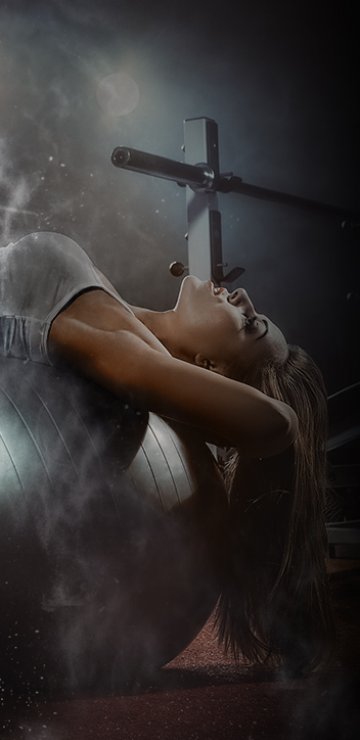
Physical exercise
PILATES SYSTEM
The Greek-born Joseph Hubertus Pilates was born in 1880 in Duesseldorf. In spite of his weak physical condition as a child, he began to work excessively with his body from the age of 14. He was interested in gymnastics and sports but especially in wrestling, in which he excelled. When World War 1 broke out, Pilates was in the UK working in a circus. The British transported and confined the entire troupe to a military camp in Lancaster along with 8,000 prisoners. In the concentration camp he was able to evolve, clarify his system and teach it to his fellow prisoners. When the great flu broke out in 1918, none of his fellow prisoners died and he proudly attributed it to teaching the system that helped maintain good health. Returning to Germany he worked as a gymnast for the Hamburg Police. His work gradually began to become known and put him in contact with people involved in movement and modern dance. As such, Rudolf Laban borrowed and incorporated elements from Pilates research as well as other important figures in the field of art and dance in particular.
The aim of this technique is to raise awareness of the human body , so that it becomes a highly flexible, highly efficient and immediately responsive tool of the human spirit. The methods used in the Pilates system are strictly scientific and in absolute agreement with the dictates of Anatomy, Physiology and Psychology. The basic theoretical principles are based on the Classical Greek Ideal of balance between healthy mind and body.
Pilates believed in the natural functionality of exercises, in the organicity of movement, which is why the basic exercises of the system follow the natural instinctive movements of the animal world: stretching, tension, flexing, and bending. The movements are designed to use every muscle and tendon, to stabilise and strengthen the core (core strengthening) so that the limbs can move with complete freedom, to facilitate the plasticity of the spine, to facilitate blood and lymph flow and to release breathing. Therefore, the greatness of Pilates' genius is that he has managed to simultaneously work the whole body in a functional way, using simple movements with specific instructions which are controlled and directed by the mind.
STRETCHING & MOBILITY
Keeping our bodies and minds healthy is essential. The success of it comes from the sum total of repeated and persistent efforts. A strong and strenuous body also needs proper recovery. Of course body flexibility is not just for professionals in the field. "Many people do not understand that stretching needs to be done on a regular basis. It ought to be done daily", says David Nolan, a physical therapist at Massachusetts General Hospital affiliated with Harvard. Improved flexibility can help in performing daily activities as it prevents the decrease in mobility that can come over time. Performance in physical activities improves as the range of motion gradually increases. It yields correct posture and understanding of all its members. The increase in blood circulation that is created helps in healing and preventing muscle pain as well as better heart function.
The focus and concentration on breathing during this process "trains" the lungs to open their capacity and for the muscles to receive the oxygen that they need for the greatest range of motion. Focused breathing during muscle stretching combats the anxiety and emotional stress caused by muscle contractions, particularly in the torso and back. Concentration can bring a mental break that results in the mind being relieved of its daily routine and therefore combating headaches.
FUNCTIONAL TRAINING
It is a whole-body training method based on imitating the daily movements that the trainees-patients make at home or at work, in order to help them return to their daily life soon and smoothly after an injury or surgery. A functional fitness programme aims from improving the athletic activity of a healthy athlete to the rehabilitation of motor difficulties after a serious injury or even a stroke.
The balance in muscle development depends on the type of exercise we follow. Functional exercise has a holistic approach, like Pilates and Yoga, i.e. it treats the body as a whole, but with the torso and generally the centre of the body as the main focus and protagonist.
ADVANTAGES
1. Better specificity of adjustments. The benefits of the exercise are transferred to daily movement
2. Greater metabolic activation and weight loss
3. Less strain on joints and better recovery from injuries
4. Better activation of trunk muscles
5. More balanced muscle development
6. Improvement of various parameters of fitness with time saving
7. Improvement of neuromuscular function and balance
The development of the body from the inside out is reflected not only in the proper functioning of the musculoskeletal system but also in the external appearance.


